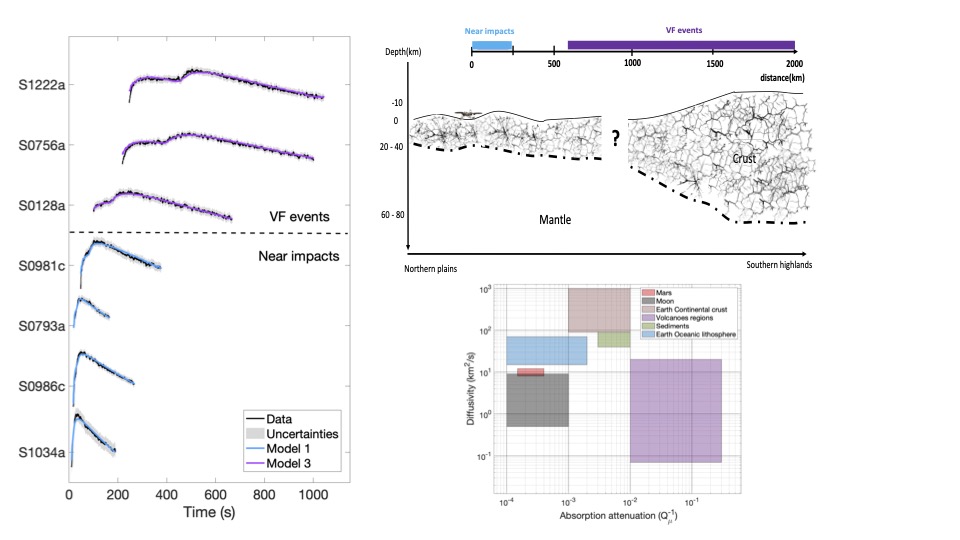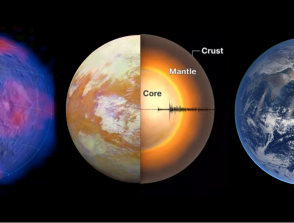Seismic attenuation in the Martian lithosphere from InSight-SEIS data: separation and stratification of scattering and absorption processes
Since its deployment in 2019, the SEIS seismometer aboard NASA's InSight mission has recorded hundreds of Very High Frequency (VF; >1 Hz) seismic events on Mars. These events feature emergent P and S wave arrivals, a broad energy peak, and an extended coda lasting up to an hour. This study aims to use these data to develop a 1-D model of the Martian lithosphere's attenuation properties, which provides insight into subsurface heterogeneity and volatile content. The study estimated two key attenuation parameters: the scattering quality factor (Qsc), which reflects medium heterogeneity and fracturing, and the intrinsic absorption quality factor (Qμ), associated with the presence of volatiles. These parameters were separated by modeling the energy envelopes using elastic radiative transfer theory and performing inversions through grid search and Levenberg-Marquardt optimization. Initial analysis of distant VF events, assuming a uniform half-space medium, revealed high Qμ values, consistent with a dry subsurface. The rapid decay of attenuation with distance suggested vertical stratification. A more advanced model was then applied, involving a two-layer structure: a heterogeneous, high-velocity upper layer over a more transparent lower medium. Inversions showed that a dry, strongly scattering layer with Qsc ≈ 50 and Qμ ≈ 3500 at 7.5 Hz, and a minimum thickness of 20 km under the InSight site, explains the energy envelopes of nearby impacts. For distant VFs, this layer must be at least 60 km thick. The correlation between this diffusive layer and the crustal depth (Moho) implies that Mars’s crust, rather than a megaregolith as on the Moon, is the dominant source of heterogeneity. Simulations also suggest that VF events originate from shallow sources concentrated in the southern highlands of Mars.

Start: 01 September 2019
End: 03 April 2023
Supervisors :
Taichi Kawamura, Ludovic Margerin
Related teams :
Planetology and Space Sciences
Status: Defended
Since 2019, a device called SEIS on NASA’s InSight lander has been recording small seismic events on Mars. These events, which happen many times, show slow energy loss and last for a long time, showing characteristic waveform known as coda wave. This study looks at these events to learn about the underground layers of Mars, especially how seismic waves move through them and to better understand heterogeneous structure of the Martian crust.
First, the shapes and energy of the signals were examined. The results showed that the seismic signals are scattered in all directions and loses energy in a way that it is completely the depolarized. Then, the timing and strength of the signals were measured. This indicates a strong scattering on Mars which falls between that of the Moon and the Earth.
To better understand this, the study tested different underground layer models. One model worked well: it showed that a thick, dry, and rough layer under the InSight landing site could explain the signals. This layer may go as deep as 60 kilometers to explain the distant events. The study also suggests that, unlike the case of the Moon, the main source of the heterogeneity is in the crust and the source of these seismic events is close to the surface in Mars’ southern areas.





